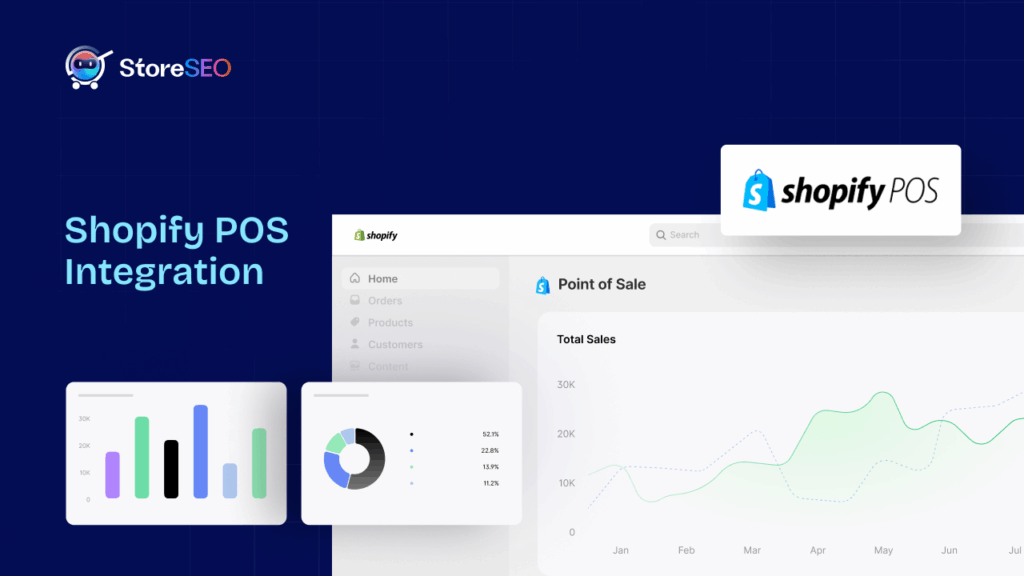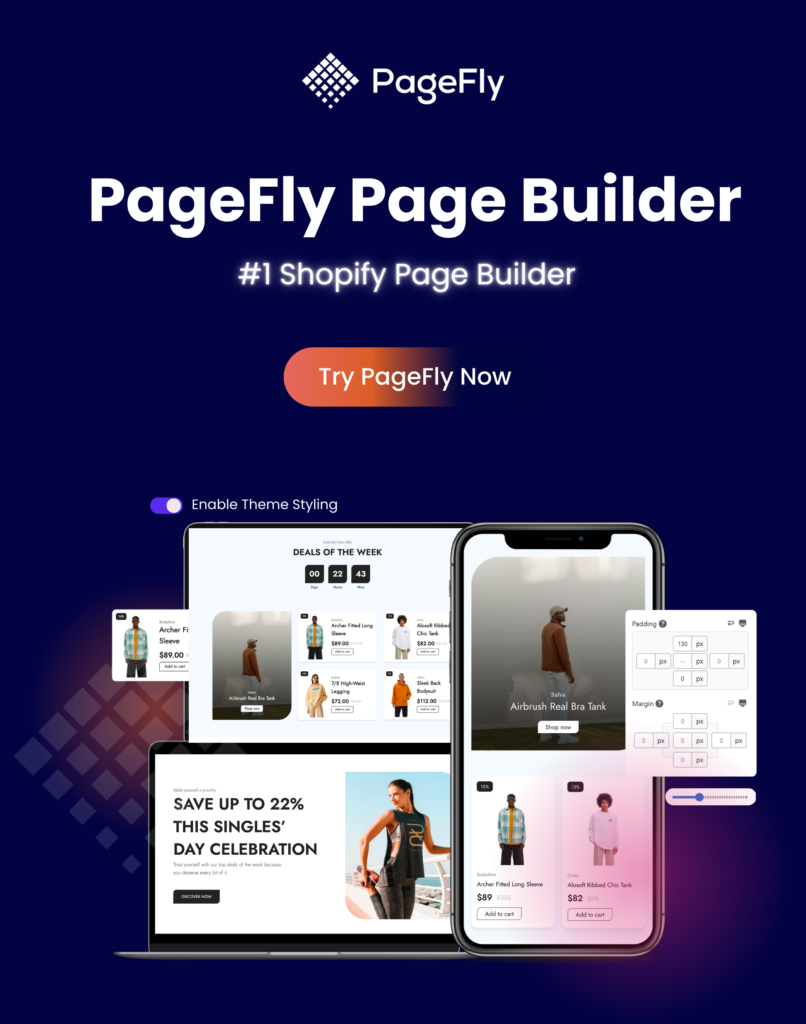De snelheid van uw Shopify-winkel kan uw zakelijke succes maken of breken. Een website die langzaam laadt, kan bezoekers frustreren en leiden tot hogere bouncepercentages. Als u trage prestaties hebt opgemerkt, is het cruciaal om de grondoorzaken te identificeren en aan te pakken. In deze blog krijgt u 5 redenen waarom uw Shopify-winkel zo traag is en bruikbare inzichten bieden om de snelheid en prestaties van uw site te verbeteren.

Hoe weet u of uw Shopify-winkel traag is?
Let op indicatoren zoals langzame paginaladingen, hoge bouncepercentages, en klachten van klanten als u weet dat uw Shopify-site langzaam draait. U moet dan gebruikersrecensies bijhouden, conversiepercentages onderzoeken en beoordelen hoe goed uw winkel op verschillende apparaten werkt. U moet ook de invloed van geïnstalleerde applicaties en thema's op de snelheid van uw winkel evalueren, evenals de serverresponstijden. Om de algehele prestaties te verbeteren, kunt u overwegen om afbeeldingen te optimaliseren, uw hostingplan bij te werken en problemen met uw thema en apps op te lossen.
Daarnaast kunt u internetbronnen zoals Google Page Speed Insights en Shopify's ingebouwde snelheidsrapport in het adminpaneel gebruiken om de prestaties van uw winkel te evalueren. Daarnaast kunt u moeiteloos de prestaties van uw website detecteren en beheren met de beste Shopify SEO-app WinkelSEO, een geavanceerde SEO-oplossing voor uw e-commercewinkel.
Waarom is sitesnelheid belangrijk voor Shopify Store?
Websitesnelheid is essentieel voor het succes van een Shopify-winkel. Het heeft niet alleen invloed op zoekmachine rankings maar speelt ook een belangrijke rol in de gebruikerservaring, conversiepercentages en de algehele perceptie van uw merk. Als u uw Shopify-winkel optimaliseert voor snelheid, kan dit leiden tot betere zichtbaarheid, hogere verkopen en een positievere online aanwezigheid. Bekijk nu verschillende redenen waarom de snelheid van de Shopify-site belangrijk is:
Betere rangschikking

Zoekmachines, met name Google, beschouwen paginasnelheid als een rankingfactor, en sneller ladende websites worden vaak hoger gerangschikt in zoekmachineresultatenpagina's (SERP's). Google streeft ernaar gebruikers de best mogelijke ervaring te bieden, en snel ladende pagina's dragen bij aan een positieve gebruikerservaring. Verbeterde rankings kunnen leiden tot meer zichtbaarheid en meer organisch verkeer naar uw Shopify-winkel.
Hogere conversiepercentages
De snelheid van uw Shopify-winkel heeft direct invloed op de gebruikerservaring. Langzaam ladende pagina's kunnen bezoekers frustreren en leiden tot hogere bouncepercentages, maar snel ladende pagina's dragen bij aan een soepelere en plezierigere winkelervaring.
Lagere bouncepercentages
Bouncepercentage verwijst naar het percentage bezoekers dat na het bekijken van slechts één pagina weg navigeert van een website. Langzaam ladende pagina's dragen bij aan hogere bouncepercentages, omdat gebruikers eerder geneigd zijn een site te verlaten als het te lang duurt om te laden. Dus door de snelheid van uw Shopify-site optimaliseren, kunt u bouncepercentages verlagen en bezoekers betrokken houden. Het zal u ook helpen de kans te vergroten dat uw klanten uw producten verkennen en een aankoop doen.
Meer autoriteit
Een snel ladende website draagt bij aan een positieve perceptie van uw merk. Gebruikers associëren snelheid met professionaliteit en betrouwbaarheid. Een trage website kan de indruk wekken van onprofessionaliteit en kan vertrouwen ondermijnen. Aan de andere kant versterkt een snelle en responsieve Shopify-winkel de geloofwaardigheid, autoriteit en betrouwbaarheid van uw merk. Dit is een van de cruciale factoren voor het winnen en behouden van klanten.
5 redenen waarom uw Shopify-winkel zo traag is

Hier in deze sectie kunt u de vijf belangrijkste redenen achter de vertraging verkennen en leren hoe u deze problemen kunt aanpakken. Dat kan u helpen uw website sneller te maken en een efficiëntere online winkelervaring op Shopify. Controleer alle details hieronder:
Gebruik van te veel apps
Als u te veel apps beheert of ongebruikte apps hebt geïnstalleerd, moet u alle onnodige apps van uw website verwijderen en ervoor zorgen dat uw e-commercewinkel wordt geladen. Dit komt doordat overmatige apps of ongebruikte apps uw browser langer laten laden en uw site vertragen. Omdat elke app codes aan uw website toevoegt, wat van invloed is op de laadtijd van uw winkel.
Slechte beeldoptimalisatie
Afbeeldingen en video's nemen een bepaalde ruimte in beslag op de website. Dus als u hebt gebruikt of overmatig gebruikte afbeeldingen, video's of aangepaste lettertypen die het laden van uw pagina vertragen, daarom moet u uw bestandsgrootte en resolutie controleren. Omdat te veel grote afbeeldingsbestanden en ingebedde video's uw e-commercewinkel kunnen vertragen.
Inefficiënte vloeibare code
Shopify gebruikt 'Vloeistof' als zijn templatetaal. Liquid-code is geschreven en inbegrepen bij uw thema. Dus als u wijzigingen aanbrengt in uw code, zoals complexe codering, niet-geoptimaliseerde of onnodige codes, kan dit uw site vertragen. U moet er goed voor zorgen en verklein uw JavaScript en CSS coderen.
Te veel trackingtags
Trackingtags zijn stukjes code die op uw website zijn ingebed om gegevens en analyses te verzamelen. Deze tags zijn belangrijk om gebruikersgedrag en marketingeffectiviteit te begrijpen. Uw e-commercewinkel kan trager worden als u te veel trackingtags aan uw Shopify-winkel toevoegt.
Gebruik van een niet-geoptimaliseerd thema
Het gebruik van een niet-geoptimaliseerd thema kan uw Shopify-winkel traag maken omdat deze thema's hebben vaak complexe of onnodige code. Dit type code kan ervoor zorgen dat uw pagina's langer nodig hebben om te laden, wat beter kan zijn voor hoe gebruikers uw site ervaren en zelfs van invloed kan zijn op hoe zoekmachines deze rangschikken.
5 snelle methoden om uw winkel te versnellen

In dit gedeelte krijgt u 5 snelle methoden om versnel uw Shopify-winkel gebruikerservaring verbeteren en mogelijk uw zoekmachine rankings verbeteren. Duik diep in dit gedeelte:
Gebruik een thema van hoge kwaliteit
Kies een lichtgewicht en goed gecodeerd thema voor uw Shopify-winkel. Hoogwaardige thema's zijn geoptimaliseerd voor prestaties, wat zorgt voor snellere laadtijden. Vermijd al te complexe thema's met onnodige functies die uw website kunnen vertragen. De themawinkel van Shopify biedt een verscheidenheid aan responsieve en snelle thema's die u kunt overwegen.
Gebruik alleen belangrijke apps
Hoewel Shopify-apps de functionaliteit kunnen verbeteren, kan het hebben van te veel apps of het gebruiken van resource-intensieve apps een negatieve impact hebben op de prestaties van uw winkel. U kunt uw geïnstalleerde apps bekijken en alleen de essentiële behouden.
Optimaliseer afbeeldingen en video's
Grote afbeeldings- en videobestanden kunnen uw website aanzienlijk vertragen. Gebruik hulpmiddelen om afbeeldingen te comprimeren en optimaliseren voordat u ze uploadt naar uw winkel. Shopify past de grootte van afbeeldingen automatisch aan voor verschillende apparaten, maar het is nog steeds belangrijk om te beginnen met bestanden met de juiste grootte en compressie. Overweeg daarnaast om lazy loading te gebruiken voor afbeeldingen en video's om het laden uit te stellen totdat ze zichtbaar zijn op het scherm van de gebruiker.
Meer informatie: Shopify SEO-auditgids: Tips om SEO-fouten in de Shopify-winkel te verhelpen
Optimaliseer CSS en Javascript
Minimaliseer en concatenateer uw CSS- en Javascript-bestanden om het aantal serververzoeken te verminderen. Dit helpt de laadtijd van uw pagina's te versnellen. Overweeg om de ingebouwde functies van Shopify te gebruiken om deze bronnen te optimaliseren. Laad daarnaast niet-essentiële scripts asynchroon om te voorkomen dat ze de weergave van uw pagina blokkeren.
Code voor het opruimen van vloeistoffen
Onderzoek uw Liquid-code en verwijder alle onnodige of overbodige code. Hoe schoner uw code, hoe sneller uw pagina's laden. Verwijder ongebruikte fragmenten, secties of scripts die uw site mogelijk vertragen. Controleer en optimaliseer uw Liquid-code regelmatig om efficiëntie te garanderen.
🔥 Aanbevolen app om uw Shopify-winkel sneller te maken
WinkelSEO: Haal StoreSEO, de alles-in-één SEO-optimalisatieoplossing voor uw Shopify-winkel. Deze oplossing krijgt de 'Gebouwd voor Shopify' badge. Shopify wordt geleverd met tal van functies zoals geavanceerde 'Keywords Analytics', een beeldoptimalisatie-add-on, enz. om u te helpen uw e-commercewinkel te laten scoren op pagina één van de zoekresultaten.
Veelgestelde vragen
Waarom is mijn Shopify-backend zo traag?
Antw: Uw Shopify-backend kan om verschillende redenen traag zijn, zoals de grootte van uw winkel en het aantal producten of apps dat u hebt toegevoegd. Daarnaast kunnen een trage internetverbinding of apparaatproblemen bijdragen. Als u traagheid ervaart, controleer dan uw internetverbinding, vereenvoudig uw winkelstructuur en overweeg om onnodige apps te verwijderen om de snelheid te verbeteren.
Wat is een goede Shopify-snelheidsscore?
Antwoord: Een goede Shopify-snelheidsscore ligt doorgaans boven de 75, volgens PageSpeed Insights van Google. Deze score weerspiegelt de prestaties van de webpagina's van uw winkel. Streef naar een hogere score om snellere laadtijden te garanderen. Optimaliseer afbeeldingen, gebruik een snel thema en verminder onnodige scripts om uw score te verbeteren. Regelmatig de snelheid van uw winkel controleren en optimaliseren kan de algehele gebruikerservaring verbeteren.
Wat is lazy loading in de Shopify-winkel?
Antw: Lazy loading is een techniek die uw Shopify-winkel helpt afbeeldingen en andere elementen alleen te laden wanneer ze op het punt staan te worden weergegeven op het scherm van de gebruiker. Dit verbetert de initiële laadtijden van de pagina, omdat niet alle content in één keer wordt geladen. Met lazy loading worden afbeeldingen en andere bronnen progressief geladen, wat de algehele snelheid en prestaties van uw winkel verbetert, met name voor gebruikers met tragere internetverbindingen.
Versnel uw succes met een snelle Shopify-winkel
Door deze vijf veelvoorkomende redenen voor trage prestaties aan te pakken, kunt u ervoor zorgen dat uw bezoekers een naadloze en plezierige winkelervaring hebben. Regelmatige controle en uw sitesnelheid optimaliseren zal niet alleen de klanttevredenheid vergroten, maar ook bijdragen aan betere rankings in zoekmachines en hogere conversiepercentages.
Vond je dit bericht leuk? Zorg ervoor dat je abonneer je op onze blog voor meer leuke tutorials.








